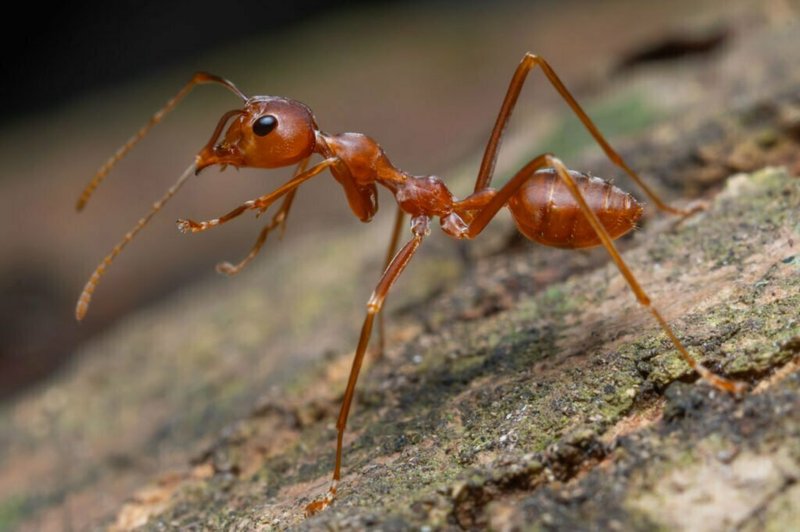
Let’s think of them as tiny warriors. They live in organized armies, so their collaboration and teamwork often inspire various cultural narratives. It’s fascinating how these little beings can resonate so deeply with human experiences and values. So, grab that coffee, and let’s dive into the rich tapestry of meaning surrounding fire ants in different cultures—you’re in for a wild ride!
The Role of Fire Ants in Nature
Fire ants are not just another bug scurrying across your backyard; they play a vital role in their ecosystems. By aerating the soil as they dig their intricate nests, they improve water absorption, which contributes to healthier plant growth. They are also natural pest controllers, feasting on insects that might otherwise damage crops.
In many ways, fire ants mirror society. They show us how collaboration can lead to a flourishing community. Each ant has a specific role, much like how individuals in a community contribute to its overall well-being. You might be wondering what happens when they feel threatened—well, they band together in a seemingly unstoppable force, ready to defend their home. It’s a powerful reminder of how unity can enhance strength.
Fire Ants as Symbols of Hard Work
Throughout history, fire ants have been seen as symbols of diligence and dedication. Their relentless work ethic is often compared to that of industrious humans. In various cultures, hardworking individuals are sometimes likened to these tiny creatures, emphasizing the importance of perseverance and teamwork.
For instance, in some Native American folklore, ants, including fire ants, represent a strong work ethic. They’re often portrayed as tireless laborers, teaching us the value of hard work to achieve our goals. This association encourages people to embrace their inner fire ant when faced with challenges in their own lives.
Fire Ants in Folklore and Mythology
When it comes to cultural symbolism, fire ants have nestled their way into folklore and mythology. In many African cultures, for example, fire ants are often depicted as wise creatures. They’re thought to possess the ability to guide humans, imparting lessons on cooperation and resourcefulness. Their stories often highlight the idea that working together leads to success.
In contrast, some mythologies warn of the wrath of fire ants. A single bite can be painful, and when angered, they can swarm in alarming numbers. This duality—their hard work and their potential for aggression—creates a complex symbol that embodies the balance between compassion and caution. It serves as a reminder that while teamwork is crucial, there’s strength in knowing when to stand your ground.
Lessons Learned from Fire Ants
Fire ants teach valuable lessons, not just in nature, but also about life. Their complex social structure is a perfect analogy for human society. Each fire ant has a role—from workers to soldiers—showing that everyone has something to contribute.
This brings us to the idea of community resilience. Communities that thrive resemble fire ant colonies; they rely on each member’s contributions. In times of crisis, there’s a profound strength when everyone works together. So, the next time you spot a fire ant, think about the lessons they offer regarding unity and collaboration.
Fire Ants in Art and Literature
Fire ants have also found their way into art and literature, often representing themes of unity, hard work, and sometimes chaos. In various paintings, you might see them depicted in ways that emphasize their industrious nature. For example, artists may illustrate fire ants building their mounds to showcase the beauty of collaboration.
In literature, authors often use fire ants as metaphors for society’s struggles. Their swarming behavior can symbolize the frenzy of modern life, where individuals come together for a common goal or cause. You can find them in poems that explore themes of community, resilience, and the natural order. This creative portrayal highlights their significance beyond simple pests—they’re powerful symbols with rich meaning.
The Impact of Fire Ants on Human Culture
In many cultures, fire ants have made their mark beyond just symbolism. They’ve drawn attention in scientific studies, highlighting their unique behaviors and social structures. Because of their complex colony dynamics, researchers often use fire ants to draw parallels to human behavior in society.
On a practical level, their presence also affects local economies. For example, fire ants can impact agriculture, making farmers more aware of pest management. This interplay between culture, environment, and economy emphasizes their role as dynamic symbols in our daily lives.
Fire Ants as Symbols of Danger
While fire ants symbolize many positive traits, they also carry a certain danger. Their painful sting is legendary, and in some cultures, they represent the idea of caution or threat. This complexity can serve as a reminder to respect nature and recognize the wild side of life.
In folklore, the fierce nature of fire ants often serves to warn against underestimating the small or seemingly insignificant. Just as fire ants can swarm unexpectedly, so too can life’s challenges catch you off guard. Embracing caution when confronting the unknown is a valuable lesson they impart.
Concluding Thoughts on Fire Ant Symbolism
So there you have it—the cultural symbolism of fire ants extends far beyond their small size. They embody qualities like hard work, unity, and even danger. Whether representing the strength of community or the chaos of life, fire ants serve as powerful symbols in our culture.
As you notice these tiny creatures in your backyard or during a hike, take a moment to reflect on what they symbolize. They might just inspire you and serve as a reminder of the rich connections we share with nature and each other. Who knew tiny insects could hold such profound meanings? Next time you see a fire ant, remember they are not just little bugs—they’re a reminder to embrace hard work, unity, and respect for nature’s balance.

